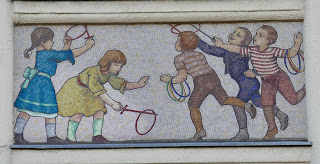All sorts of good things flowed from their extra care in their choice of building styles - a lifting of spirits, a feeling that you, a little person on the street, and your feelings, were being taken into account and that there was a desire to please you, to brighten your life and that of your community.
Cost then was not the only consideration when planning a new school or office or hospital, whereas now my impression is that the creativity of an architect must exercise itself entirely within the parameters of cost - any ingenuity must be the result of brilliance plus cost considerations and, if brilliance is expensive, cost considerations always win out.
There is also the problem that we have not thought it important to keep the tradition of skilled craftsmanship alive. For some reason, the idea crept in at some stage that a degree in media studies gave you the right to regard yourself as wiser than a lifetime of quiet taking of pains to create beautiful objects. I have always been baffled by this.
What prompted this line of thought was discovering a lovely school building on the corner of Lehel street and Dózsa György street in the thirteenth district of Budapest. Its architest was Ernö Balázs (Note No. 1) and the designer of the enchanting mosaic friezes that decorate it was Károly Kernstoch. The school started to be built in 1909 but, due to strikes, it was not opened until February 1911. It became a hospital in the first world war and got fairly battered in subsequent conflicts, but it is now fulfilling its original purpose, with a particular emphasis on singing, music and physical training. I can't believe that it doesn't have some positive effect on children to be provided with a building that has been decorated with such care:






























No comments:
Post a Comment